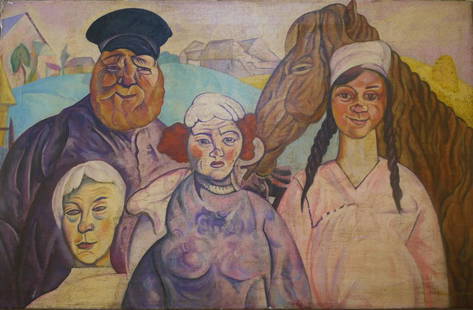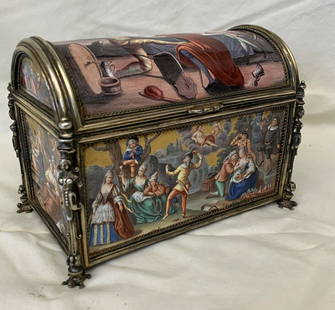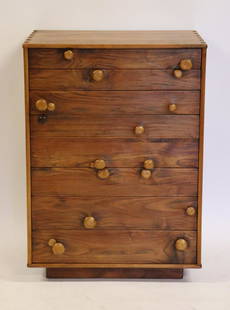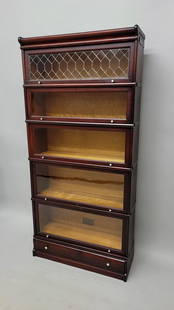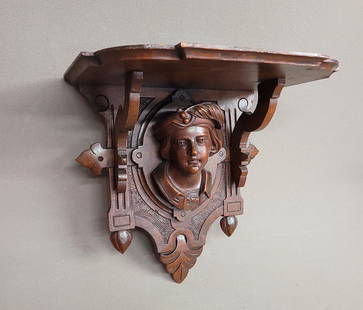
Rare groupe franc-maçon 'crinoline' représentant un couple d'amoureux, circa 1745A rar...
Meissen Sale History
View Price Results for Meissen
Recommended Items



Item Details
Description
Rare groupe franc-maçon 'crinoline' représentant un couple d'amoureux, circa 1745
A rare Meissen masonic crinoline group of lovers, circa 1745
Modelled by J.J. Kaendler, the lady seated on a gilt-edged high-backed chair sewing an apron on a gilt-edged rococo table, the apron resting on a green cushion next to a seated pug dog, scissors and a spool of thread, wearing a white cap with red ribbon, a black crinoline dress reserved with indianische Blumen and with puce cuffs and bodice and yellow bows, a purple underskirt and gilt-striped red shoes, the gentleman blowing her a kiss, wearing a blue-lined white jacket with gilt buttons, gilt-edged red waistcoat and turquoise breeches, a gilt square hanging from his shirt, a sword to his right and his tricorn hat under his left arm, the base applied with leaves and flowers, 18cm high (minor restoration)
Footnotes:
Provenance:
Paul Schnyder von Wartensee Collection, Luzern;
Thence by descent;
The Property of a European Nobleman, sold Sotheby's London, 29 June 1982, lot 105
Literature:
S. Ducret, Meissner Porzellan (1952), fig. 42;
S. Ducret, Deutsches Porzellan und Deutsche Fayencen (1962), no. 42;
S. Ducret, German Porcelain and Faience (1962), no. 42;
S. Ducret, Porzellan der europäischen Manufakturen im 18. Jahrhundert (1971), col. pl. 22;
S. Ducret, The Colour Treasury of 18th Century Porcelain (1971), fig. 22;
Johannes Rafael, Zur 'Taxa Kaendler', in Keramos 203/204 (2009), p. 60 (illustrated);
W. Siemen (pub.), Vor den Ursprüngen des europäischen Porzellans bis zum Art Déco (2010), cat. no. 72
Exhibited:
Zürich, Kunsthaus, 'Schönheit des 18. Jahrhunderts', 10 September to 6 November 1955, cat. no. P22;
Hohenberg a.d. Eger. Museum der deutschen Porzellanindustrie Hohenberg, 'Impulse. Europäische Porzellanmaufakturen als Wegbereiter internationaler Lebenskultur', 1995;
Selb and Hohenberg a.d. Eger, Porzellanikon, 'Königstraum und Massenware. 300 Jahr europäisches Porzellan', 24 April to 2 November 2010
The group is listed in Kaendler's Taxa of overtime work: '1. Frey Maurer Groupgen, da eine Dame an einem Tische darauff ein Neh-Küßen befindl. sizet, u. ein Schurz Fell einfaßt, neben der Dame sizt ein Mopß Hund, ein Frey Maurer aber findet sich zu ihr und will sie küßen, 18 Thlr.' [1 freemason group of a lady seated at a table on which there is a sewing cushion and sewing the hem of an apron. a pug dog is seated next to the lady, a freemason is by her and wants to kiss her] (quoted by Rafael, op. cit, p. 60).
The pug dog is usually seated on the base. Only two other examples are recorded with the pug on the table: in the Maurice de Rothschild collection, sold at Christie's London, 28 March 1977, lot 127; and another, sold at Sotheby's Geneva, 10 May 1988, lot 42, and again at Sotheby's London, 25 October 2016, lot 597. Other recorded examples of this rare group are in the Metropolitan Museum of Art, New York, Irwin Untermyer Collection, acc. no. 64.101.62; in the Kunstgewerbemuseum, Berlin (formerly in the collections of Walter von Pannwitz and Hermine Feist), published by S. Bursche, Meissen Steinzeug und Porzellan (1980), no. 310; and (mounted as a clock) the Museum of Fine Arts, Boston, inv. no. 1993.54. Another was in the Hermann Emden Collection, Hamburg (sold by Lepke's Berlin, 3-7 November 1908, lot 367), and subsequently in the René Fribourg Collection, New York (mounted on an ormolu scrollwork base), sold Sotheby's London, 15 October 1963, lot 496.
The first Masonic lodges in German lands were established in Hamburg in 1737 and Berlin in 1740, attracting many members from the Protestant nobility. Catholics were forbidden from joining by a papal bull issued by Pope Clement XII in 1738. In response, the pseudo-Masonic Order of the Pug Dog (Mopsorden) was established, which copied masonic rituals, but – unlike the Freemasons – allowed women to join. The pug dog, the fashionable lapdog of the time, was adopted as a symbol of the order, which resulted in the production of numerous courtly figures and groups with pugs, as well as models of the dogs themselves, at the Meissen manufactory. See S. Bursche, op. cit, pp. 300-301; and, for a detailed account of the Mopsorden, E. Köllmann, Der Mopsorden, in Keramos 50 (1970), pp. 71ff.
A rare Meissen masonic crinoline group of lovers, circa 1745
Modelled by J.J. Kaendler, the lady seated on a gilt-edged high-backed chair sewing an apron on a gilt-edged rococo table, the apron resting on a green cushion next to a seated pug dog, scissors and a spool of thread, wearing a white cap with red ribbon, a black crinoline dress reserved with indianische Blumen and with puce cuffs and bodice and yellow bows, a purple underskirt and gilt-striped red shoes, the gentleman blowing her a kiss, wearing a blue-lined white jacket with gilt buttons, gilt-edged red waistcoat and turquoise breeches, a gilt square hanging from his shirt, a sword to his right and his tricorn hat under his left arm, the base applied with leaves and flowers, 18cm high (minor restoration)
Footnotes:
Provenance:
Paul Schnyder von Wartensee Collection, Luzern;
Thence by descent;
The Property of a European Nobleman, sold Sotheby's London, 29 June 1982, lot 105
Literature:
S. Ducret, Meissner Porzellan (1952), fig. 42;
S. Ducret, Deutsches Porzellan und Deutsche Fayencen (1962), no. 42;
S. Ducret, German Porcelain and Faience (1962), no. 42;
S. Ducret, Porzellan der europäischen Manufakturen im 18. Jahrhundert (1971), col. pl. 22;
S. Ducret, The Colour Treasury of 18th Century Porcelain (1971), fig. 22;
Johannes Rafael, Zur 'Taxa Kaendler', in Keramos 203/204 (2009), p. 60 (illustrated);
W. Siemen (pub.), Vor den Ursprüngen des europäischen Porzellans bis zum Art Déco (2010), cat. no. 72
Exhibited:
Zürich, Kunsthaus, 'Schönheit des 18. Jahrhunderts', 10 September to 6 November 1955, cat. no. P22;
Hohenberg a.d. Eger. Museum der deutschen Porzellanindustrie Hohenberg, 'Impulse. Europäische Porzellanmaufakturen als Wegbereiter internationaler Lebenskultur', 1995;
Selb and Hohenberg a.d. Eger, Porzellanikon, 'Königstraum und Massenware. 300 Jahr europäisches Porzellan', 24 April to 2 November 2010
The group is listed in Kaendler's Taxa of overtime work: '1. Frey Maurer Groupgen, da eine Dame an einem Tische darauff ein Neh-Küßen befindl. sizet, u. ein Schurz Fell einfaßt, neben der Dame sizt ein Mopß Hund, ein Frey Maurer aber findet sich zu ihr und will sie küßen, 18 Thlr.' [1 freemason group of a lady seated at a table on which there is a sewing cushion and sewing the hem of an apron. a pug dog is seated next to the lady, a freemason is by her and wants to kiss her] (quoted by Rafael, op. cit, p. 60).
The pug dog is usually seated on the base. Only two other examples are recorded with the pug on the table: in the Maurice de Rothschild collection, sold at Christie's London, 28 March 1977, lot 127; and another, sold at Sotheby's Geneva, 10 May 1988, lot 42, and again at Sotheby's London, 25 October 2016, lot 597. Other recorded examples of this rare group are in the Metropolitan Museum of Art, New York, Irwin Untermyer Collection, acc. no. 64.101.62; in the Kunstgewerbemuseum, Berlin (formerly in the collections of Walter von Pannwitz and Hermine Feist), published by S. Bursche, Meissen Steinzeug und Porzellan (1980), no. 310; and (mounted as a clock) the Museum of Fine Arts, Boston, inv. no. 1993.54. Another was in the Hermann Emden Collection, Hamburg (sold by Lepke's Berlin, 3-7 November 1908, lot 367), and subsequently in the René Fribourg Collection, New York (mounted on an ormolu scrollwork base), sold Sotheby's London, 15 October 1963, lot 496.
The first Masonic lodges in German lands were established in Hamburg in 1737 and Berlin in 1740, attracting many members from the Protestant nobility. Catholics were forbidden from joining by a papal bull issued by Pope Clement XII in 1738. In response, the pseudo-Masonic Order of the Pug Dog (Mopsorden) was established, which copied masonic rituals, but – unlike the Freemasons – allowed women to join. The pug dog, the fashionable lapdog of the time, was adopted as a symbol of the order, which resulted in the production of numerous courtly figures and groups with pugs, as well as models of the dogs themselves, at the Meissen manufactory. See S. Bursche, op. cit, pp. 300-301; and, for a detailed account of the Mopsorden, E. Köllmann, Der Mopsorden, in Keramos 50 (1970), pp. 71ff.
Condition
Lady:
Her little finger on her right hand restored.
The edge of the gilt-edged shell at the centre of the top of the chair back is restored.
There is a firing haircrack running over the top of her crinoline dress on her left side: it starts at a small firing crack on the base (below the rear table leg on her left) and goes up in a loop over the side of her dress to the rear where it curves beneath the chair and runs along the bottom edge of the rear of her dress beneath the front chair legs.
A second branch of the firing haircrack runs off the first, from the front of her dress (behind the corner of the table on her left), diagonally downwards across the front of her dress behind the table (and across the back leg of the table on her right) to the base on her right side, where it joins a tight firing crack on the base.
There is a small area of retouching to the black enamel along the firing crack on the back of her dress; and a slightly smaller (ca. 1cm) narrow area of retouching along the firing crack on the front of her dress (visible under UV light).
There is a short area of retouching (5cm) to the gilt edge of her black dress on her right side.
Table:
There are some tiny spots of rubbing to the black enamel on the pug dog's face.
There are three small, narrow areas of retouching to the gilt edge of the front of the table (two approx 1cm; one approx. 2cm).
There are short firing haircracks to the top of the front right table leg and to the bottom of the back right table leg (seen from the front - original condition). There are a few typical scattered tiny spots of wear to the gilding on the table legs.
Gentleman:
The index finger on his right hand is restored. The little finger on his left hand is restored.
The Tip of his sword scabbard (where it protrudes from the bottom of his jacket) is restored.
There are a few typical minor chips to the applied leaves on the base (the broken edges retouched in green). Otherwise in good condition.
Her little finger on her right hand restored.
The edge of the gilt-edged shell at the centre of the top of the chair back is restored.
There is a firing haircrack running over the top of her crinoline dress on her left side: it starts at a small firing crack on the base (below the rear table leg on her left) and goes up in a loop over the side of her dress to the rear where it curves beneath the chair and runs along the bottom edge of the rear of her dress beneath the front chair legs.
A second branch of the firing haircrack runs off the first, from the front of her dress (behind the corner of the table on her left), diagonally downwards across the front of her dress behind the table (and across the back leg of the table on her right) to the base on her right side, where it joins a tight firing crack on the base.
There is a small area of retouching to the black enamel along the firing crack on the back of her dress; and a slightly smaller (ca. 1cm) narrow area of retouching along the firing crack on the front of her dress (visible under UV light).
There is a short area of retouching (5cm) to the gilt edge of her black dress on her right side.
Table:
There are some tiny spots of rubbing to the black enamel on the pug dog's face.
There are three small, narrow areas of retouching to the gilt edge of the front of the table (two approx 1cm; one approx. 2cm).
There are short firing haircracks to the top of the front right table leg and to the bottom of the back right table leg (seen from the front - original condition). There are a few typical scattered tiny spots of wear to the gilding on the table legs.
Gentleman:
The index finger on his right hand is restored. The little finger on his left hand is restored.
The Tip of his sword scabbard (where it protrudes from the bottom of his jacket) is restored.
There are a few typical minor chips to the applied leaves on the base (the broken edges retouched in green). Otherwise in good condition.
Buyer's Premium
- 28% up to €40,000.00
- 27% up to €800,000.00
- 21% above €800,000.00
Rare groupe franc-maçon 'crinoline' représentant un couple d'amoureux, circa 1745A rar...
Estimate €40,000 - €60,000
3 bidders are watching this item.
Shipping & Pickup Options
Item located in Paris, France, frSee Policy for Shipping
Payment

Related Searches
TOP






















